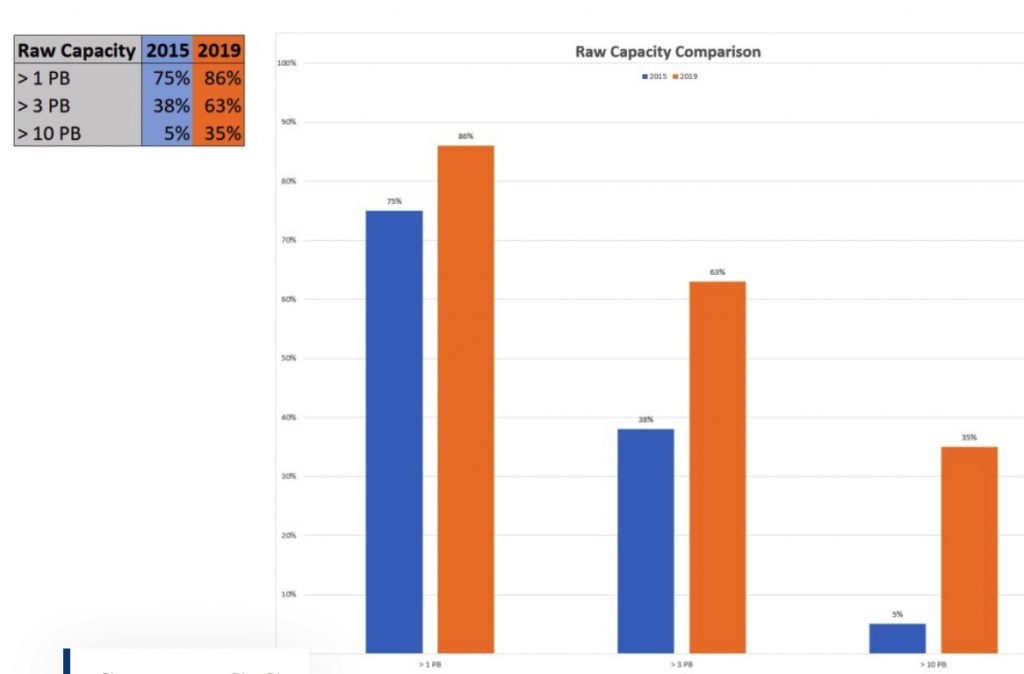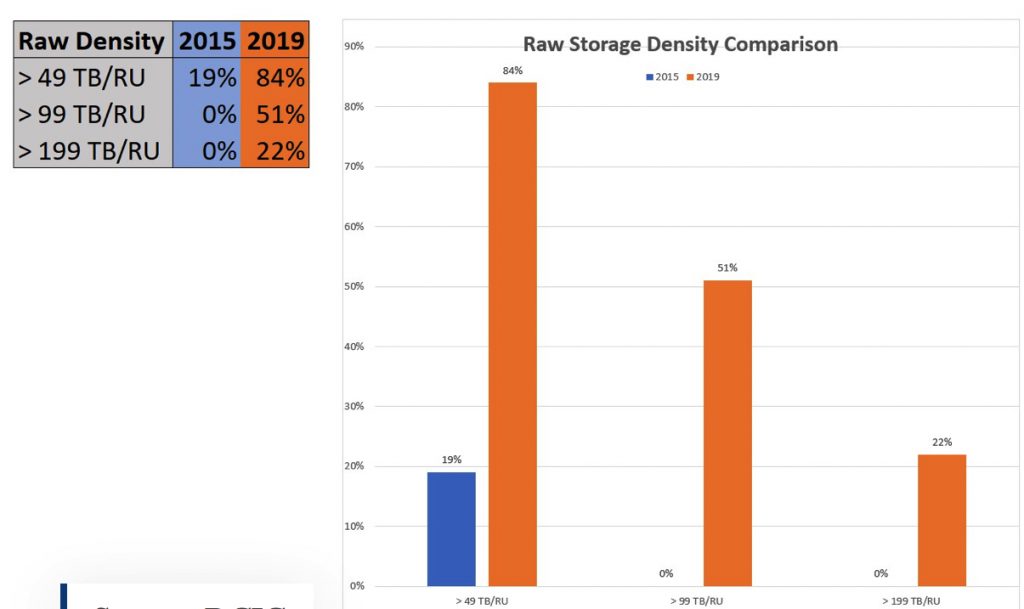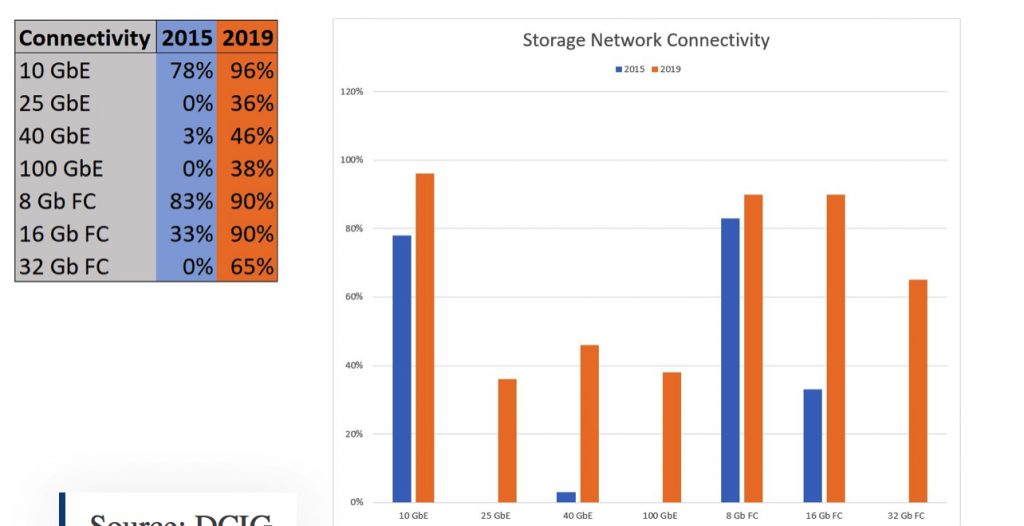How Enterprise Storage Arrays Adapting to Meet Changing Business Requirements?
How do they provide new levels of capacity, density and fast connectivity?
This is a Press Release edited by StorageNewsletter.com on October 31, 2019 at 2:56 pm![]() This report was published on October 24, 2019, and written by Ken Clipperton, lead analyst for storage, DCIG, LLC:
This report was published on October 24, 2019, and written by Ken Clipperton, lead analyst for storage, DCIG, LLC:
Over the last 5 years, what mid-sized enterprises expect from their technology infrastructures has changed.
Data and the continuous availability of the systems that provide that data are critical to virtually all business operations. Beyond operations, we have entered a period of digital transformation where data has become a tactical and even strategic resource. Data is the foundation for value creation. Enterprise storage systems are changing in a variety of ways to address enterprise expectations for continuous availability, greater capacity, and the performance required to support critical workloads.
DCIG has recently updated its research on enterprise storage and beginning in 1Q20 will publish a series of reports based on this research. This article draws on that research to reveal how these storage systems are providing new levels of storage capacity, density and high-speed connectivity.
Continuous Availability
Five years ago, a discussion of availability features would typically focus on the ability of a storage system to continue serving data in the face of HDD, cooling fan and controller failures. While these foundational features are still important, current conversations about availability are more likely to focus on proactive support enabled by predictive analytics, or on cloud-based intelligence that avoids downtime by taking the entire operating environment into consideration to either recommend or black-list particular software and firmware updates.
Capacity and Density
The raw capacity and storage density provided by midrange storage arrays have greatly increased over the past 5 years, as illustrated by the following charts. The majority of today’s enterprise storage arrays can provide more than 3PB of raw storage capacity. More than one-third of them can provide more than 10PB of storage in a single system.
Click to enlarge
A similar dynamic applies to storage density. Increases in the capacity of individual HDDs and SSDs, along with new high-density enclosures, have resulted in major increass in the amount of data that can be stored per rack unit. HDD capacity has more than doubled over the last f5 years. Changes in SSD capacity are more dramatic. Five years ago, the largest SSD that most arrays supported had a capacity of 400TB. Today, most arrays support 7.68TB SSDs, and more than a third support 15.36TB SSDs. Enterprises embracing this high density storage are achieving substantial savings in data center floor space.
Click to enlarge
Fast Storage Network Connectivity
Storage vendors are embracing faster storage networking connectivity in order to keep up with these increases in storage capacity and density. Nearly half of all arrays now support Ethernet connectivity of greater than 10GbE, and 65% support 32Gb FC. Complimenting these increases in storage network speeds, nearly 75% have adopted 12Gb SAS connectivity to the drives and drive trays.
Click to enlarge
While enterprises certainly care about much more than speeds and feeds, these provide the foundation upon which advanced capabilities that enable digital transformation are based. Future articles and reports will address the advanced capabilities that enterprise storage systems bring to the table to create new value for the enterprises that deploy them.















 Subscribe to our free daily newsletter
Subscribe to our free daily newsletter
